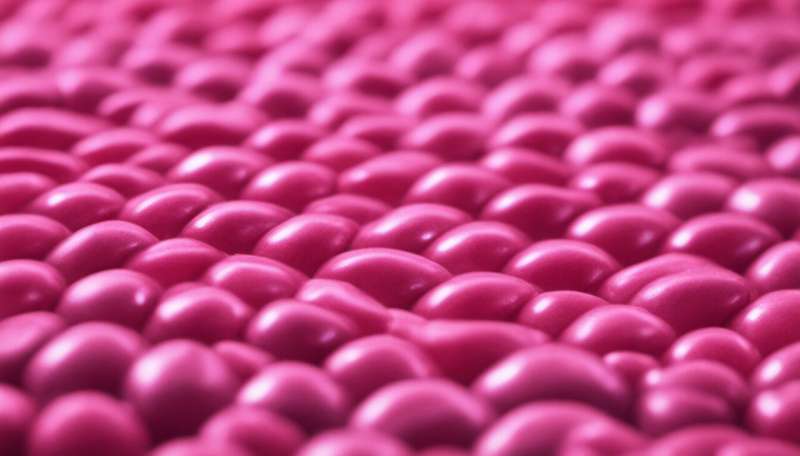How breast milk could help prevent the antibiotic apocalypse

Imagine a future where common infections and minor injuries such as small cuts could actually kill you. This is far from an apocalyptic fantasy made up by Hollywood scriptwriters, but a very real possibility for the 21st century according to a 2014 report by the World Health Organization (WHO). It argues that antibiotic resistance, the fact that bacteria and other microbes are becoming less and less sensitive to antimicrobial drugs, is amounting to a major global threat.
WHO recently followed up on this frightening assessment with a new report presenting 13 "global priority bacteria", including MRSA. It suggests we need to prioritise research on these bacteria because they cause major levels of disease and mortality.
So, what is being done? Well, the pharmaceutical industry has not discovered a major new class of antibiotics since 1987 and it has little incentive to spend hundreds of millions of dollars to develop novel drugs. This is because whatever drugs they come up with will most likely be shelved until no other drug can treat a specific infection. Also, most infections are not chronic in nature and treatment only lasts ten days or so, which drastically reduces sales and return on the investments. Finally, once the new drug is being used, we know from experience that bacteria are inevitably going to become resistant to it quickly, making the antibiotic useless. This drastically confines the market size and profitability of new antibiotics.
But there is hope. Academic research, alliances with industry and other partnerships have, over the past decade or so, started to think outside the box. If new antibiotics are going to be developed they would need to target parts of the bacteria that find it difficult to mutate, such as the membrane. This is one possible approach – but we have yet to see a successful case.
That said, there are other approaches to this that may well be successful. Bacteria adapt to antibiotics in different ways to become resistant. They put pumps in their membranes that actively gets rid of antibiotics – so the drug can't reach its target. They make enzymes that directly inactivate or destroy the antibiotics. And most commonly they adapt by mutating or changing the target of the antibiotic so that it can no longer bind and kill. New therapeutic strategies may therefore not need to try to find new targets but instead try to make the bacteria more sensitive to the antibiotics we already have. Attacking pumps and enzymes is one possible way to go.
The remarkable role of breast milk
But there are others as well, and this is where breast milk and one of its components come in as an important example. Several years ago, we identified a special compound in breast milk, made from protein and fat, that we called HAMLET: Human Alpha-lactalbumin Made Lethal to Tumour cells. The HAMLET complex was found to kill cancer cells without having any effect on nearby healthy cells. HAMLET killed the cancer cells partly by entering the cells and destroying the function of the mitochondria, the "power plant" of all cells, which resulted in cell death. HAMLET could not enter healthy cells, meaning they were "insensitive" to the compound.
Interestingly, way back in evolution, mitochondria are thought to have once been a type of bacteria which formed a symbiotic relationship with another type of bacteria. We therefore tested the potential activity of HAMLET on bacteria. And indeed, HAMLET did kill some types of bacteria, but the effect was not universal. Many important bacterial species were unaffected and survived.
To kill bacteria, HAMLET bound to the bacterial membrane. This first caused the hydrogen pump in the membrane to stop, so that the hydrogen concentrations (the pH) on each side of the membrane became the same. The change in pH allowed the transport of calcium inside the cell that was necessary for the bacteria to die.
However, we have since realised that even the surviving bacteria are not unaffected. Indeed, we found that HAMLET can affect the membranes and cause transport of hydrogen and calcium ions even for tough bacteria. This made the bacteria sensitive to the antibiotics they were resistant to – reversing the resistance.
In fact, HAMLET was so effective that it made MRSA sensitive to the antibiotic methicillin again. We were not only able to show that methicillin could kill MRSA in a test tube but also that it could eradicate infection in mice. This has become a major breakthrough. It shows the great potential that strategies such as this one can prolong the usefulness of the safe and tested antibiotic arsenal that we already have.
One of the greatest strengths of this approach is that substances such as HAMLET are not as likely as new antibiotics to lead to resistance. This is because they do not actually kill the bacteria themselves. There is therefore less evolutionary pressure on the bacteria to change to survive them. We are therefore currently developing these findings in the hope that they, and others like them, will provide a new treatment strategy to combat antibiotic resistance.
We are not quite there yet, as we have to go through the usual process of testing – determining the efficiency and safety of the compound – before we can start doing clinical trials. What we are doing now is undertaking these preparatory studies. There's every reason to be hopeful about the future.
This article was originally published on The Conversation. Read the original article.![]()


















